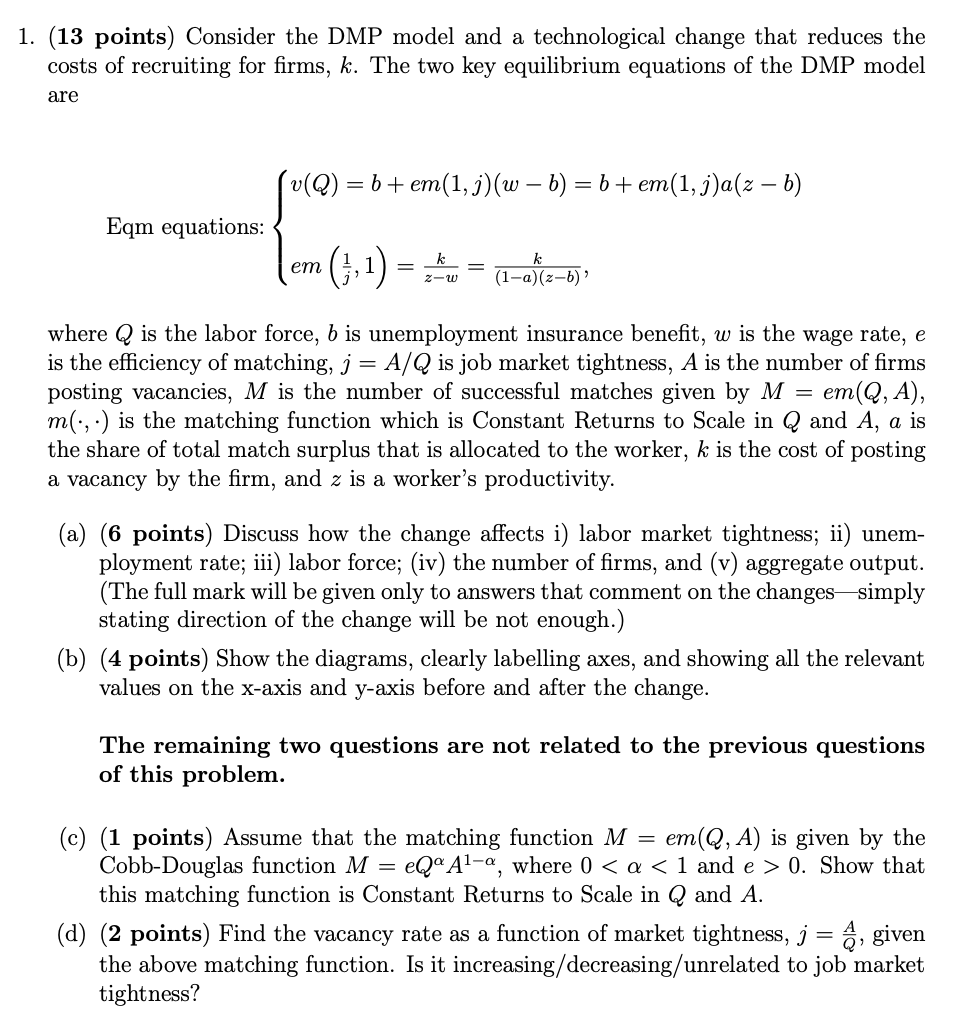Question
1. (13 points) Consider the DMP model and a technological change that reduces the costs of recruiting for firms, k. The two key equilibrium equations
1. (13 points) Consider the DMP model and a technological change that reduces the costs of recruiting for firms, k. The two key equilibrium equations of the DMP model are Eqm equations: v(Q) = b + em(1, j)(w ? b) = b + em(1, j)a(z ? b) em 1 j , 1 = k z?w = k (1?a)(z?b) , where Q is the labor force, b is unemployment insurance benefit, w is the wage rate, e is the efficiency of matching, j = A/Q is job market tightness, A is the number of firms posting vacancies, M is the number of successful matches given by M = em(Q, A), m(, ) is the matching function which is Constant Returns to Scale in Q and A, a is the share of total match surplus that is allocated to the worker, k is the cost of posting a vacancy by the firm, and z is a worker's productivity. (a) (6 points) Discuss how the change affects i) labor market tightness; ii) unemployment rate; iii) labor force; (iv) the number of firms, and (v) aggregate output. (The full mark will be given only to answers that comment on the changes?simply stating direction of the change will be not enough.) (b) (4 points) Show the diagrams, clearly labelling axes, and showing all the relevant values on the x-axis and y-axis before and after the change. The remaining two questions are not related to the previous questions of this problem. (c) (1 points) Assume that the matching function M = em(Q, A) is given by the Cobb-Douglas function M = eQ?A1?? , where 0 0. Show that this matching function is Constant Returns to Scale in Q and A. (d) (2 points) Find the vacancy rate as a function of market tightness, j = A Q , given the above matching function. Is it increasing/decreasing/unrelated to job market tightness?
!!!!!!****PLEASE DO NOT DO (a) or (b). I have (a) and (b) already***!!!!!!!! Only do (c) and (d)

Step by Step Solution
There are 3 Steps involved in it
Step: 1

Get Instant Access to Expert-Tailored Solutions
See step-by-step solutions with expert insights and AI powered tools for academic success
Step: 2

Step: 3

Ace Your Homework with AI
Get the answers you need in no time with our AI-driven, step-by-step assistance
Get Started


